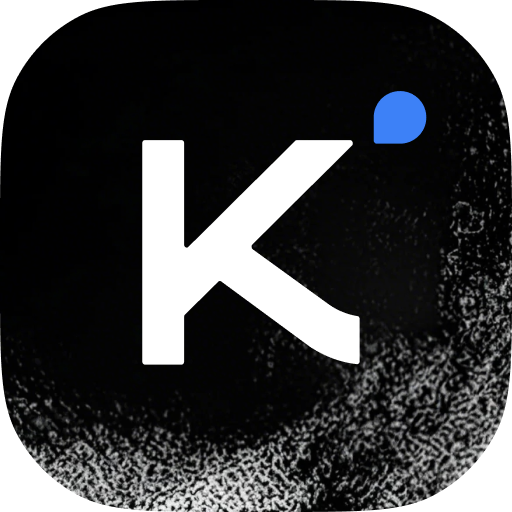What are Open Source LLMs for Engineering?
Open source LLMs for engineering are specialized Large Language Models designed to tackle complex software engineering tasks, from code generation and debugging to autonomous patching of real codebases. Using advanced deep learning architectures like Mixture-of-Experts (MoE) and reinforcement learning, they translate natural language instructions into functional code, debug existing software, and integrate with developer tools. This technology allows engineers and developers to accelerate software development, automate repetitive tasks, and build robust solutions with unprecedented efficiency. They foster collaboration, accelerate innovation, and democratize access to powerful engineering tools, enabling a wide range of applications from individual coding projects to large-scale enterprise software development.
moonshotai/Kimi-Dev-72B
Kimi-Dev-72B is a new open-source coding large language model achieving 60.4% on SWE-bench Verified, setting a state-of-the-art result among open-source models. Optimized through large-scale reinforcement learning, it autonomously patches real codebases in Docker and earns rewards only when full test suites pass. This ensures the model delivers correct, robust, and practical solutions aligned with real-world software engineering standards.
moonshotai/Kimi-Dev-72B: State-of-the-Art Software Engineering Performance
Kimi-Dev-72B is a new open-source coding large language model achieving 60.4% on SWE-bench Verified, setting a state-of-the-art result among open-source models. Optimized through large-scale reinforcement learning, it autonomously patches real codebases in Docker and earns rewards only when full test suites pass. This ensures the model delivers correct, robust, and practical solutions aligned with real-world software engineering standards. With 72 billion parameters and a 131K context length, this model excels at understanding complex codebases and delivering production-ready solutions. Available on SiliconFlow at $0.29/M input tokens and $1.15/M output tokens.
Pros
- State-of-the-art 60.4% score on SWE-bench Verified among open-source models.
- Optimized through large-scale reinforcement learning for real-world engineering.
- Autonomously patches codebases with Docker integration.
Cons
- Higher inference cost compared to smaller models.
- Requires significant computational resources for deployment.
Why We Love It
- It sets the gold standard for open-source software engineering AI with its groundbreaking SWE-bench Verified performance and practical, production-ready code generation capabilities.
Qwen/Qwen3-Coder-480B-A35B-Instruct
Qwen3-Coder-480B-A35B-Instruct is the most agentic code model released by Alibaba to date. It is a Mixture-of-Experts (MoE) model with 480 billion total parameters and 35 billion activated parameters, balancing efficiency and performance. The model natively supports a 256K token context length, enabling it to handle repository-scale codebases and complex programming tasks. Qwen3-Coder is specifically designed for agentic coding workflows.

Qwen/Qwen3-Coder-480B-A35B-Instruct: The Most Agentic Engineering Model
Qwen3-Coder-480B-A35B-Instruct is the most agentic code model released by Alibaba to date. It is a Mixture-of-Experts (MoE) model with 480 billion total parameters and 35 billion activated parameters, balancing efficiency and performance. The model natively supports a 256K (approximately 262,144) token context length, which can be extended up to 1 million tokens using extrapolation methods like YaRN, enabling it to handle repository-scale codebases and complex programming tasks. Qwen3-Coder is specifically designed for agentic coding workflows, where it not only generates code but also autonomously interacts with developer tools and environments to solve complex problems. It has achieved state-of-the-art results among open models on various coding and agentic benchmarks, with performance comparable to leading models like Claude Sonnet 4. Available on SiliconFlow at $1.14/M input tokens and $2.28/M output tokens.
Pros
- Most agentic code model with autonomous tool interaction.
- 480B total parameters with efficient 35B activation via MoE.
- 256K native context, extendable to 1M tokens for repository-scale work.
Cons
- Higher pricing due to model size and capabilities.
- May be overkill for simple coding tasks.
Why We Love It
- It revolutionizes agentic coding workflows by autonomously interacting with developer tools and handling massive codebases, making it the ultimate choice for complex software engineering projects.
zai-org/GLM-4.5-Air
GLM-4.5-Air is a foundational model specifically designed for AI agent applications, built on a Mixture-of-Experts (MoE) architecture. It has been extensively optimized for tool use, web browsing, software development, and front-end development, enabling seamless integration with coding agents such as Claude Code and Roo Code. GLM-4.5 employs a hybrid reasoning approach for diverse application scenarios.

zai-org/GLM-4.5-Air: Optimized for Agent-Driven Engineering
GLM-4.5-Air is a foundational model specifically designed for AI agent applications, built on a Mixture-of-Experts (MoE) architecture. It has been extensively optimized for tool use, web browsing, software development, and front-end development, enabling seamless integration with coding agents such as Claude Code and Roo Code. GLM-4.5 employs a hybrid reasoning approach, allowing it to adapt effectively to a wide range of application scenarios—from complex reasoning tasks to everyday use cases. With 106B total parameters and 12B active parameters, it delivers exceptional performance at a lower inference cost. The model supports a 131K context length, making it ideal for comprehensive engineering workflows. Available on SiliconFlow at $0.14/M input tokens and $0.86/M output tokens.
Pros
- Specifically optimized for AI agent applications and tool integration.
- Seamlessly integrates with popular coding agents like Claude Code.
- Efficient MoE architecture with 12B active parameters.
Cons
- Not the largest model for the most complex engineering tasks.
- Context length is smaller than some specialized coding models.
Why We Love It
- It strikes the perfect balance between agent-driven capabilities, software development optimization, and cost-efficiency, making it an ideal choice for engineering teams building AI-powered development workflows.
Engineering LLM Comparison
In this table, we compare 2025's leading open source LLMs for engineering, each with a unique strength. For production-ready code generation with the highest SWE-bench Verified scores, moonshotai/Kimi-Dev-72B leads the pack. For massive-scale agentic coding workflows, Qwen/Qwen3-Coder-480B-A35B-Instruct offers unmatched repository understanding. For cost-effective agent-driven development with tool integration, zai-org/GLM-4.5-Air provides excellent value. This side-by-side view helps you choose the right tool for your specific engineering needs.
| Number | Model | Developer | Subtype | Pricing (SiliconFlow) | Core Strength |
|---|---|---|---|---|---|
| 1 | moonshotai/Kimi-Dev-72B | moonshotai | Reasoning, Coding | $0.29 in / $1.15 out per M tokens | 60.4% SWE-bench Verified (SOTA) |
| 2 | Qwen/Qwen3-Coder-480B-A35B-Instruct | Qwen | Coding, Agentic | $1.14 in / $2.28 out per M tokens | Most agentic, 256K-1M context |
| 3 | zai-org/GLM-4.5-Air | zai | Reasoning, Agent, Coding | $0.14 in / $0.86 out per M tokens | Agent-optimized, cost-efficient |
Frequently Asked Questions
Our top three picks for 2025 are moonshotai/Kimi-Dev-72B, Qwen/Qwen3-Coder-480B-A35B-Instruct, and zai-org/GLM-4.5-Air. Each of these models stood out for their innovation, performance in software engineering tasks, and unique approach to solving challenges in code generation, autonomous patching, and agentic development workflows.
Our in-depth analysis shows several leaders for different needs. moonshotai/Kimi-Dev-72B is the top choice for production-ready code generation and autonomous codebase patching with the highest SWE-bench Verified score among open-source models. For engineers who need maximum agentic capabilities and repository-scale understanding, Qwen/Qwen3-Coder-480B-A35B-Instruct excels with its 256K-1M token context and autonomous tool interaction. For cost-effective agent-driven development with excellent tool integration, zai-org/GLM-4.5-Air provides the best value with optimizations for Claude Code and Roo Code integration.
